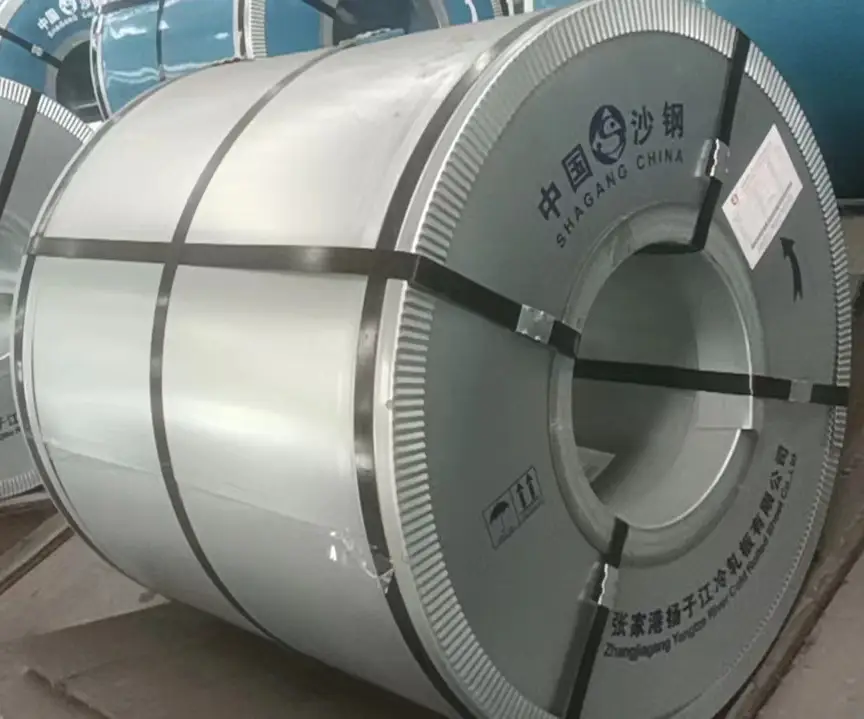Email format error
Email cannot be empty
Email already exists
6-20 characters(letters plus numbers only)
The password is inconsistent
Please enter the email address you’d like your password reset information sent to.
Email format error
Email cannot be empty
Email does not exist
Reset account password
For the account
6-20 characters(letters plus numbers only)
The password is inconsistent
Reset success
Your password was reset. You can log in using your new password.
Login

News

Applications of Cold-Rolled Low Carbon Steel Sheets
2025-03-21 15:46:29
Cold-rolled low carbon steel sheets are a vital material in the modern manufacturing landscape, finding extensive applications across various industries. These sheets are engineered to meet diverse requirements, combining strength, formability, and cost-effectiveness. In this blog, we will delve into the intricacies of cold-rolled low carbon steel sheets, exploring their production processes, properties, applications, and the factors that influence their performance.
Production Process
Cold rolling is a crucial step in the manufacturing of low carbon steel sheets. The process involves reducing the thickness of hot-rolled steel sheets at room temperature, which imparts specific mechanical properties and surface finish to the material. The degree of deformation during cold rolling can significantly impact the microstructure and performance of the steel. For instance, studies have shown that high deformation can lead to the refinement of grain structures, enhancing the strength and ductility of the material. However, excessive deformation may also introduce defects or reduce formability, so it is essential to optimize the rolling parameters.
Microstructure and Properties
The microstructure of cold-rolled low carbon steel sheets is predominantly composed of ferrite, with possible inclusions of pearlite and other phases, depending on the specific composition and processing conditions. The presence of fine-grained ferrite contributes to the excellent formability and deep-drawing properties of these sheets, making them suitable for applications that require significant deformation, such as automotive body panels and household appliances.
One of the key advantages of cold-rolled low carbon steel sheets is their balance between strength and ductility. The cold rolling process work-hardens the steel, increasing its yield strength while maintaining a reasonable level of elongation. This combination of properties allows the sheets to withstand various forming operations without cracking or tearing. Additionally, the surface finish of cold-rolled steel sheets is superior to that of hot-rolled sheets, providing a better base for painting, coating, or other surface treatments.
Applications
Cold-rolled low carbon steel sheets are widely used in numerous industries due to their versatility and cost-effectiveness. In the automotive sector, they are employed for manufacturing body panels, doors, hoods, and other structural components. Their excellent formability allows for complex shapes to be achieved through stamping and pressing processes, while their strength ensures the durability and safety of the vehicle. In the construction industry, these sheets are used for roofing, siding, and other applications where corrosion resistance and ease of installation are important.
In the manufacturing of household appliances, cold-rolled low carbon steel sheets are the material of choice for refrigerator bodies, washing machine drums, and other components. Their smooth surface finish and ability to be coated with various finishes make them visually appealing and durable. Additionally, the food and beverage industry utilizes these sheets for making cans, containers, and other packaging materials.
Influencing Factors
Several factors can influence the properties and performance of cold-rolled low carbon steel sheets. One such factor is the annealing process, which is often used to relieve internal stresses and improve the formability of the steel. The temperature and duration of annealing can significantly impact the microstructure and mechanical properties of the sheets. For example, continuous annealing at different temperatures can affect the precipitation and distribution of carbides in the steel, altering its yield strength and ductility.
Another important factor is the cooling rate after annealing. Faster cooling rates can lead to finer grain structures and higher strength, but may also reduce ductility. Therefore, it is crucial to optimize the cooling process to achieve the desired balance of properties. Additionally, the presence of alloying elements and impurities in the steel can influence its performance. For instance, the addition of small amounts of aluminum can improve the steel's formability and corrosion resistance.
Conclusion
Cold-rolled low carbon steel sheets are popular because they are strong, easy to shape, and affordable. To use them effectively in different industries, it's important to understand how they are made, their properties, and what factors affect them. As technology improves, we can expect these steel sheets to get even better, which will allow them to be used in more ways and help the manufacturing sector grow.
Prev Post
Next Post
Contact us


